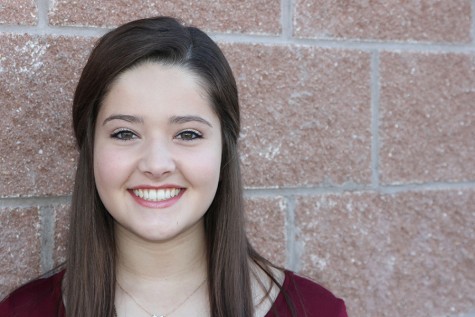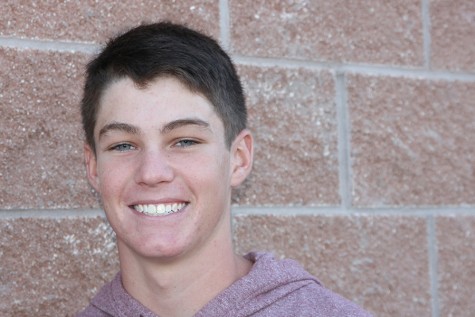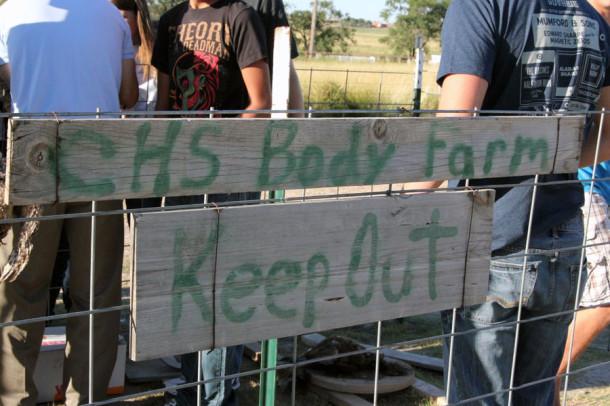Teacher buries bodies on campus, forensics students observe decomposition
A teacher silently slips onto the school grounds, and unobserved, he buries a body. Other bodies are left in plain sight, either on the ground, on a platform, or strung up on a post. Now he waits and watches for students to unearth the source of the fowl odor.
What the students discovered was the CHS Body Farm, located outside of the school fences. The body farm, managed by forensic science teacher Jared Peddy, contains four dead chickens that the class is tracking for two weeks. The students watch the decay of the chickens and discover more information about factors that impact the decomposition.
“The goal of the body farm was to understand how forensic entomologists are able to use insects as a means to determine Post Mortem Interval, the time between death and discovery of the body,” Peddy said.
The class learns about the life cycle of the blow fly, which goes through each stage at a specific time.
“I put the chickens out over a weekend,” Peddy said. “The kids are able to use the fly maggots to determine a 12 hour window within which the bodies were placed.”
Observing the effect of the insects on the decaying chickens was not the only aspect of the farm. The class also watched how different factors affect how quickly the chickens decay.
“One chicken is left on the ground, one on a raised platform, and the third suspended in the air tied to a t-post,” Peddy said. “The fourth is our control. It is buried and dug up after the two weeks to compare to the rest.”
Senior Calvin Rueda said watching the chickens for two weeks was interesting.
“It was cool to see how bodies decompose in different positions and areas, and different levels of humidity and temperatures,” Rueda said.
Rueda said he will find the experience useful in the future.
“I am going into law of some sort, so any kind of forensic knowledge will help me,” Rueda said.

Hey y’all! My name is Allison, and I’m the Co-Editor-In-Chief of the Eagle’s Tale. This is my final year on staff, as I am a senior. Along with the wonderful world of journalism, I am involved in all things theater. From musical to One-Act, I spend...

My name is Tristen Hefner and this will be third and final year on staff. I act as the video editor for the online newspaper. My favorite thing to do is play baseball, which I do over the summer, and when spring rolls around, I play for CHS. I have a...






